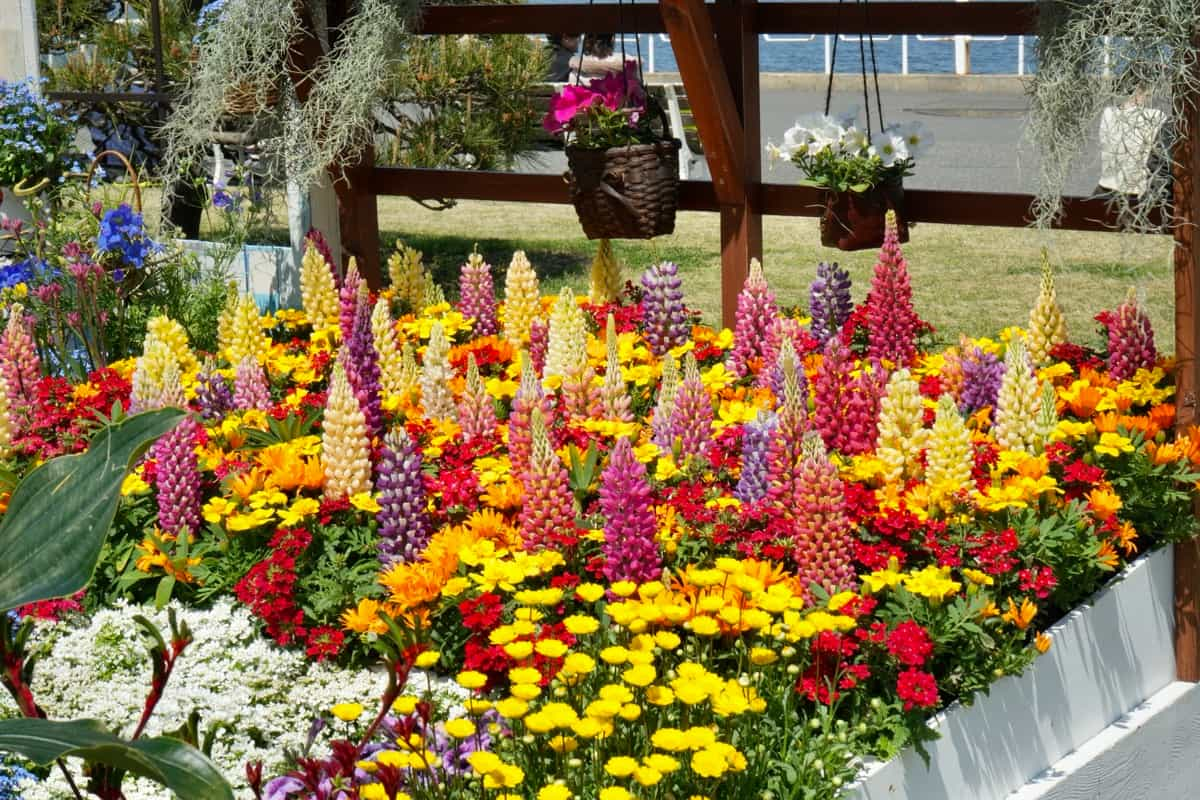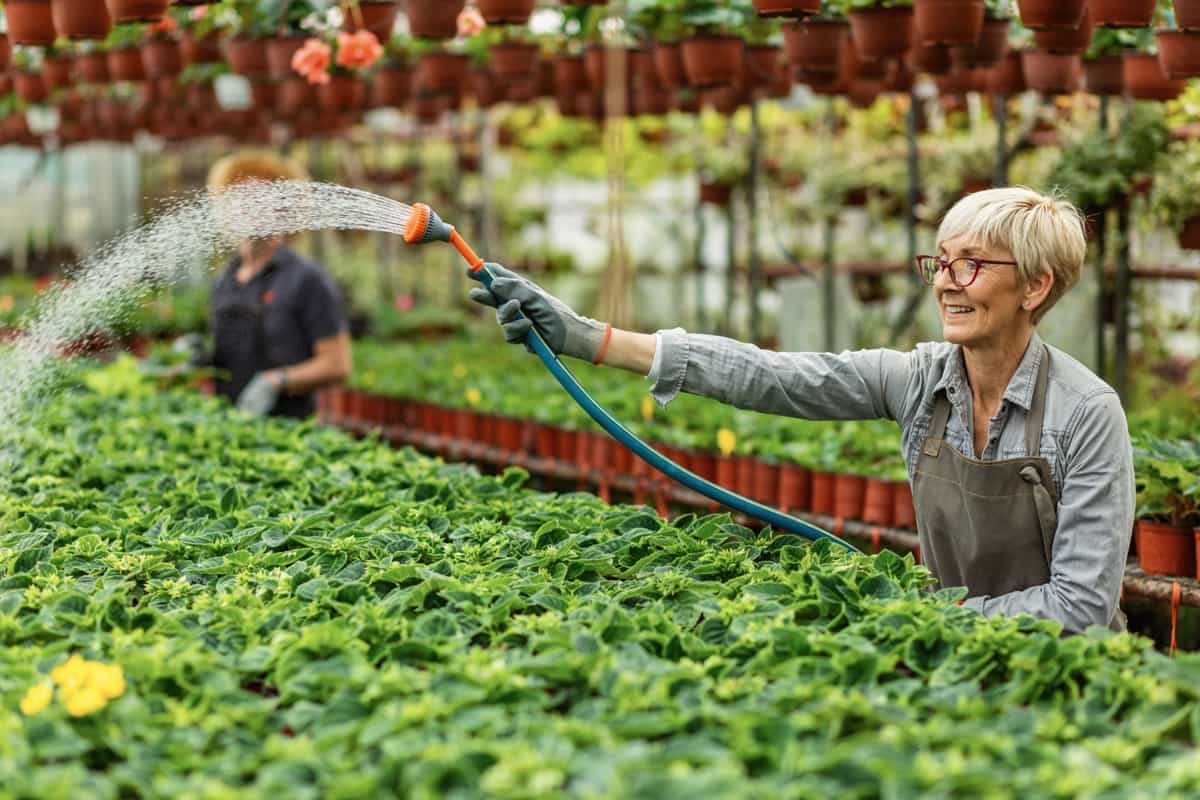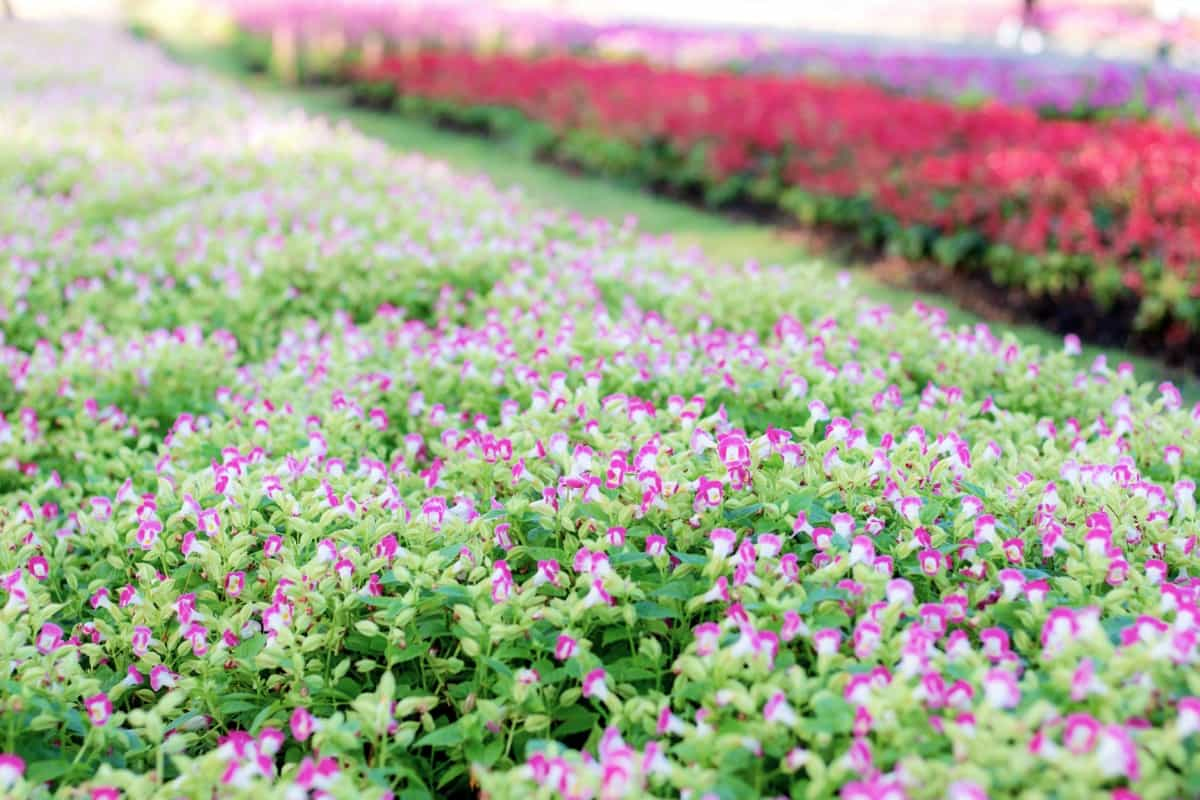When it comes to maintaining a flourishing flower garden, understanding the water needs of different flower species is crucial. Each plant has its unique requirements, and providing them with the right amount of water can make all the difference in their growth and overall health. Some may always prefer moist soil, while others thrive in drier conditions.

Knowing these preferences will help you tailor your watering schedule accordingly. Implementing effective water management strategies is essential for maintaining healthy and vibrant flower gardens. By understanding each plant’s unique requirements, utilizing alternative sources like rainwater harvesting, and practicing conservation techniques, you can create an eco-friendly oasis that blooms beautifully year after year.
12 Best Water Management Strategies for Flower Gardens
Implement Drip Irrigation Systems
Implementing drip irrigation systems in your flower garden can be a game-changer when it comes to water management. This efficient watering method delivers water directly to the plant’s roots, minimizing wastage and ensuring that each plant gets the right amount of moisture. By using drip irrigation, you can avoid overwatering or underwatering your flowers, which is essential for their healthy growth. The slow and steady release of water helps prevent soil erosion and reduces weed growth by targeting only the plants you want to nourish.
Drip irrigation systems also help conserve water by reducing evaporation loss. Traditional sprinkler systems tend to lose a significant amount of water due to evaporation before it even reaches the ground. With drip irrigation, you can maximize the efficiency of every drop. Installing a drip irrigation system may require some initial investment and planning, but it will pay off in the long run. Not only will you save time on manual watering, but you’ll also save money on your water bill while promoting healthier flower growth.
Utilize Mulch to Retain Soil Moisture
One effective water management strategy for flower gardens is to utilize mulch. Mulching not only adds aesthetic appeal but also retains soil moisture and suppresses weed growth. There are various types of mulch that you can use in your garden. Organic options like straw, wood chips, or shredded leaves help improve soil structure as they break down over time.
Inorganic mulches such as gravel or pebbles provide excellent weed control and reflect sunlight away from the soil surface. When applying mulch, make sure to maintain a depth of around 2-4 inches. This will provide sufficient coverage without suffocating the plants’ roots. Avoid piling up mulch directly against plant stems, as it can cause rotting and encourage pests. Additionally, consider choosing lighter-colored mulches for sunnier areas of your garden.
Choosing Drought-Resistant Flower Varieties
When it comes to water management in flower gardens, one of the most effective strategies is selecting drought-resistant flower varieties. Various beautiful flowers can thrive with minimal watering. One such example is the Lavender plant, known for its stunning purple blooms and aromatic fragrance. Lavender thrives in dry soil and requires little water once established.
In case you missed it: 18 Best Essential Tips on Watering Your Houseplants

Another excellent choice is the Yarrow plant, which features clusters of small, colorful flowers. Yarrow has deep roots that help it access moisture from lower layers of soil, making it highly resilient during periods of drought. Sedums are also an excellent option as they store water and can withstand long periods without rainfall. Their diverse colors and textures make them a great addition to any garden. Other drought-tolerant options include Coneflowers, Black-eyed Susans, Salvia, and ornamental grasses like Fountain Grass or Blue Fescue.
Optimize Watering Schedules
Optimizing watering schedules for your flower garden is crucial to ensure that your plants get the right amount of water at the right time. To begin, consider the specific needs of each type of flower in your garden. Some flowers need frequent watering, while others are more drought tolerant. Take note of these differences and create a customized schedule based on their requirements.
During hot summer months you may need to increase the frequency of watering sessions. On the other hand, during cooler seasons or periods of rain, you can reduce watering frequency. Another aspect to consider is the type of soil in your garden. Different soils have varying levels of water retention capacity. Sandy soil tends to drain quickly and requires more frequent irrigation, while clay soil holds onto moisture longer and necessitates less frequent watering.
Implement Rainwater Harvesting Techniques
One effective water management strategy for flower gardens is to implement rainwater harvesting techniques. There are several methods you can use to harvest rainwater. One option is to install a rain barrel or multiple barrels connected through a system of gutters and pipes. These barrels can be placed strategically around your garden to catch the rainfall, which can then be used to water your flowers during dry periods.
Another technique is the use of underground cisterns or tanks that capture large amounts of rainwater from rooftops or other surfaces. This stored water can be accessed as needed, providing a sustainable source of irrigation for your flower beds. In addition to reducing water waste, rainwater harvesting also helps prevent run-off into storm drains and local bodies of water.
Use Smart Irrigation Controllers
If it has rained recently or if the humidity levels are high, the controller will reduce or skip watering altogether, preventing overwatering and conserving water. Another great benefit of smart irrigation controllers is their remote accessibility. With a smartphone app or web interface, gardeners can easily monitor and control their watering systems from anywhere at any time.
In case you missed it: How to Utilize Biochar to Enhance Soil Fertility and Water Retention in Home Gardens

In addition to optimizing watering schedules, smart irrigation controllers also offer customization options. Users can program different zones within their garden with specific water requirements for different plant species. This ensures that each plant receives its ideal amount of water without wasting resources.
Apply Water-Saving Techniques
- Install a soaker hose: Rather than using traditional sprinklers, opt for a soaker hose that delivers water directly to the plant roots. This minimizes evaporation and ensures efficient watering.
- Practice deep watering: Give your plants a deep soak once or twice a week. This encourages deeper root growth and decreases the need for constant irrigation.
- Mulch: Applying organic mulch around your flowers retain moisture in the soil by reducing evaporation. It also prevents weed growth that can compete with plants for water.
- Collect rainwater: Set up rain barrels or cisterns to collect rainwater from your roof gutters during rainfall events. This free source of water can be used to irrigate your flower garden during dry periods.
- Avoid over-watering: Many gardeners tend to overwater their plants out of fear of underwatering them. However, most flowers prefer slightly dry conditions rather than constantly wet soil.
- Implement drip irrigation systems: Drip irrigation is an excellent way to save water as it delivers small amounts directly to each plant’s base without wasting any through run-off or evaporation.
Improve Soil Structure for Better Water Retention
One key aspect of effective water management in flower gardens is improving the soil structure to enhance water retention. By making a few adjustments to the soil, you can ensure that your flowers receive adequate moisture while minimizing wastage. To start, consider adding organic matter such as compost or well-rotted manure to the soil. This improves its ability to hold onto water and allows for better absorption by plant roots.
Another technique is incorporating amendments like perlite or vermiculite into heavy clay soils. These materials help improve drainage and prevent waterlogging, allowing for better distribution of water throughout the root zone. Additionally, aerating compacted soils can greatly enhance their capacity to retain moisture.
In case you missed it: How to Propagate Pothos from Leaf Cuttings, Stem Cuttings in Water and the Soil

Aerating creates small holes in the ground using a garden fork or similar tool, which loosens up compacted areas and promotes better infiltration of water. Furthermore, practicing proper watering techniques also contributes to improved soil structure and increased water retention. Instead, provide deep but infrequent watering sessions that penetrate deeper into the soil profile where roots are located.
Monitor Soil Moisture Levels
Monitoring soil moisture levels is essential for maintaining healthy flower gardens. One way to monitor soil moisture levels is by using a moisture meter. These handy tools provide instant feedback on whether your soil is too dry or too wet. Simply insert the probe into the ground, and it will give you a reading that indicates how moist or dry the soil is. Another method is simply observing your plants. Wilting leaves and drooping flowers are signs that your plants may be in need of water.
On the other hand, if you notice yellowing leaves or root rot, it could mean that your plants are being overwatered. It’s important to note that different flower species have varying water requirements. Some flowers prefer drier conditions, while others thrive in moist environments. Therefore, it’s crucial to understand the specific needs of each plant in order to monitor their soil moisture levels effectively.
Practice Proper Watering Techniques
One key tip is to water deeply and infrequently. This means giving your flowers a thorough soaking less frequently rather than lightly watering them every day. Another important technique is to water at the base of the plants rather than spraying leaves with a sprinkler. This helps prevent diseases and ensures that the water goes directly where it’s needed – at the root zone.
Timing is also crucial when it comes to watering. The best time to water is early in the morning or late in the evening when temperatures are cooler, reducing evaporation rates and allowing plants enough time to absorb moisture before the hot sun hits. When using overhead irrigation methods such as sprinklers, try not to overwater or create puddles in your garden beds.
Consider Microclimates within the Garden
When it comes to flower gardening, considering microclimates within your garden can make a significant difference in water management. Microclimates are small areas within your garden that have unique climate conditions, such as temperature variations, sunlight exposure, and wind patterns. By understanding these microclimates, you can better cater to the specific needs of each area.
Start by observing and mapping out the different microclimate zones in your garden. For example, some areas may receive more shade or be shielded from strong winds due to surrounding structures or trees. These factors directly impact how much water is needed for plants in those areas. Once you have identified these microclimate zones, adjust your watering schedule accordingly. Areas with more sun exposure will likely require more frequent watering compared to shaded spots.
In case you missed it: The Ultimate Guide to the Top 16 Best Watermelon Varieties

By tailoring your watering routine based on these distinctions, you can ensure that each plant receives adequate moisture without wasting unnecessary water. Additionally, consider using protective measures for plants located in extreme microclimate zones. For instance, if an area tends to get extremely hot during peak summer months, provide shade cloth or use mulch around plants to help retain soil moisture and prevent evaporation.
Implement Sustainable Water Conservation Practices
Conserving water is not only important for the environment but also crucial for maintaining a healthy and vibrant flower garden. By implementing sustainable water conservation practices, you can reduce your water usage while still ensuring that your flowers thrive. One effective practice is to collect rainwater for irrigation purposes. This reduces reliance on municipal water sources and helps to conserve this precious resource.
Another way to conserve water in your flower garden is by using soaker hoses or drip irrigation systems. These methods minimize evaporation and runoff. This targeted approach ensures that each plant receives the necessary moisture without wasting excess water. Regularly monitoring soil moisture levels is crucial for efficient watering practices. Simply dig down a few inches with your finger to check if the soil feels dry before watering again.
In case you missed it: When to Water Your Vegetable Garden: DYI Guide for Beginners

Conclusion
When it comes to managing water in your flower garden, there are several strategies you can employ to ensure the health and vitality of your plantings. Understanding the specific water needs of different flower species is key to implementing effective watering techniques. By tailoring your approach to each type of flower, you can optimize their growth and minimize waste. By adopting these best practices for water management in your flower garden, you’ll create an environment where beautiful blooms can flourish while conserving this precious resource at the same time.
- Seasonal Flower Gardening: Best Practices for Spring, Summer, Fall, and Winter
- How to Grow Hibiscus from Flower
- Plantation Ideas for Home Decoration: A Beginners Guide
- Flower Garden Designs and Layouts for Beginners
- Planting and Spacing Techniques in Papaya: A Beginner’s Guide
- Growing Gold: Essential Techniques for Planting Pineapples
- How to Make Kalanchoe Plant Bushy: Home Remedies and Solutions
- 11 Reasons Why Your Gardenia is Not Blooming: Home Remedies and Solutions
- Eco Elegance: The Guide to Designing a Drought-Tolerant Landscape
- Gardening on a Slope: Strategies for Hillside Landscaping
- Nourish and Flourish: Top Organic Mulches for Thriving House Plants
- Everything You Want to Know about Indian Mogra Flower: Discover Uses and Growing
- Green Thumb Success: Expert Tips for Cultivating Greenhouse Pumpkins All Year Round
- Maximize Growth & Flavor: The Ultimate Guide to Companion Planting in Herb Gardens
- How to Control Rhododendron Problems Naturally: Home Remedies and Organic Ways to Fix Them
- Natural Magic: The Remarkable Benefits of Cinnamon for Plants
- Best Steps to Revive Dying Tulip with Natural and Organic Treatment
- 10 Reasons Why Your Angel Trumpet is Not Blooming: Remedies and Treatment
- How to Fix Periwinkle Leaf and Flower-Related Problems: Natural Remedies and Solutions
- How to Fix Zinnias Leaf and Flower Problems: Discover Natural and Home Remedies
- Organic Steps to Induce Lemon Tree Flowers: A Comprehensive Guide
- Bloom Booster: Crafting the Perfect Homemade Bougainvillea Fertilizer
- Optimizing Growth: A Guide to Applying NPK Fertilizer for Potted Plants
- 10 Best Homemade Fertilizers for Rubber Plant: DIY Recipes and Application Method
- How to Boost Female Pumpkin Flowers: Effective Steps for More Flowers and High Yields
- Transform Your Indoor Garden: Top Benefits of Pink Salt for Houseplants
- 10 Best Homemade Fertilizers for Peacock Plants (Calathea): Easy DIY Guide
- Unlock Blooms: 9 Reasons Why Your Potted Chrysanthemum is Not Blooming
- 8 Reasons Why Your Potted Hibiscus is Not Blooming: Fix it with Simple Solutions
- Unlock Blooms: 9 Key Reasons Your Potted Frangipani Won’t Flower
- 10 Reasons Why Is My Ice Plant Not Blooming: Remedies and Treatment
- 10 Reasons Why My Potted Hydrangea Not Blooming: Treatment and Remedies
- 10 Reasons Why is My Wisteria Not Blooming: Remedies and Treatment
- 10 Reasons Why is My Goldfish Plant Not Blooming: Remedies and Treatment
- Maximize Your Space: Ultimate Guide to Balcony Gardening with Grow Bags
- 10 Reasons Why Your Iris is Not Blooming: Remedies and Treatment